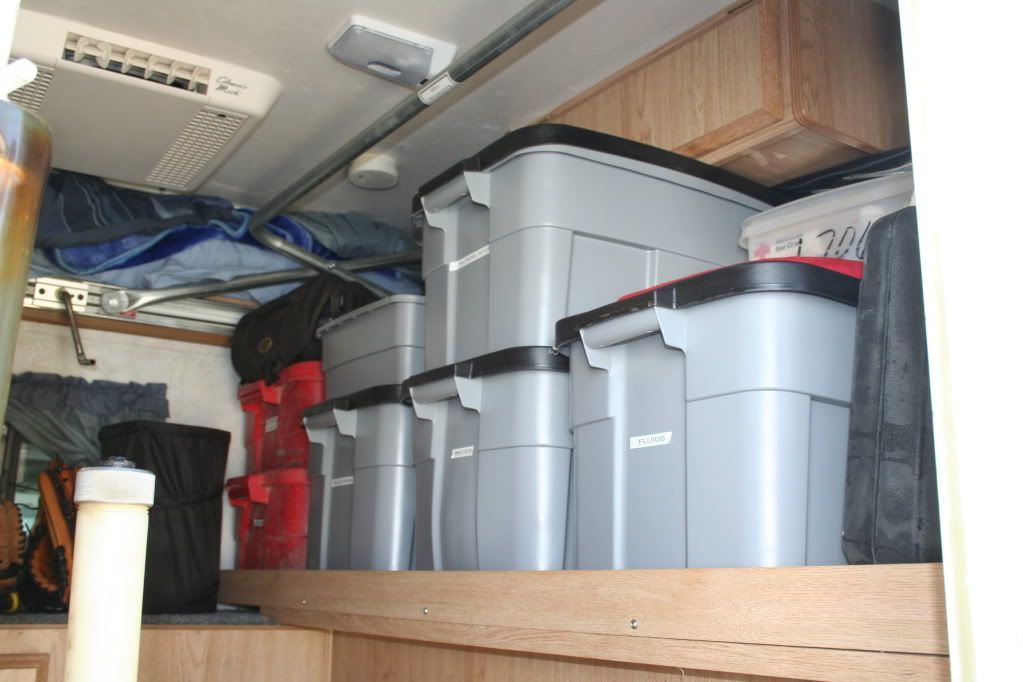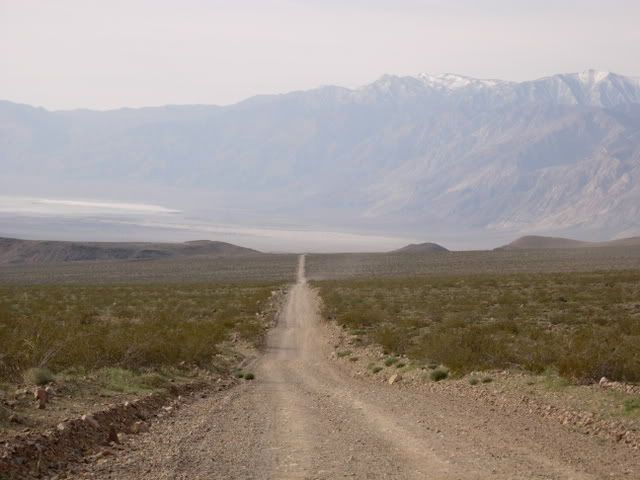Redline,
You made my case with the pic of your F-truck. See the way the frame is twisting and taking the bed with it? I see a lot less of that with my Dodge as the twisting is transfered more to the suspension, but when it does flex, and it does, I take precautions to make sure the tie downs don't get undue torque. The frame of my camper is still rigid and I'd like it to stay that way.
I live in the same town and have talked to Gary and Monika Wescott (Turtle Expedition) and followed their exploits for the last 35 years. They may be the original Expo camper people. They have tried every version of campers from hard sides to pop ups and now use a frame mounted, 3 point attachment system on their custom made camper box. Since it's frame mounted you could not call it a truck camper anymore. If the box was removed there would be no 'pickup' use of the truck. It is one sweet purpose built rig. Everything they have done to 'make-it-work' has come through the school of trial-and-error, and hard knocks. They took a Ford 3/4T P.U. with short, skinny little AT tires on a trans-Siberian trek some years ago and found they needed MUCH bigger tires and clearance, like the ruskies use on their Trans-Siberian winter trucks. They also found that the weight and top clearance savings by using a 4Wheel camper was not worth the leaking, frigid, wind-blown agony. You'll notice now that they have huge tires on an F-550 chassis and completely weather-proof box. I am simply in awe. However, I'm simply not in their league, money wise. I had to do it on the cheap and incrementally.
I notice the 9' Alpenlite mudmony above seems to have a heavy camper with a basement, probably 1200 lbs. heavier than mine. This set up is doomed to fail, off-road. Also, bob91Y with the AC on his little camper; doomed.
We all come from a different vantage point and experience. I was a hard-core jeeper (small j sometimes) since 1965. When we became a family, I switched to larger, family size camping/jeeping rigs. We made a lot of 'way-out-there' trips in those rigs. After the kids were grown and in stage two (1. out of the house. 2. out of my pocket), I bought a pickup to flat tow my rock crawler, then bought a car trailer to haul the jeep. Then, as I was getting older and softer, laying on the ground in the snow or dust at the end of a day's crawling held less appeal. Enter the hard side camper. This is where I started to use the physics of jeeping and apply them to a wondrously improbable off-road, hard side truck camper. The physics of a 1800 lb. white box on the back of a short bed pick up made no sense at all. But, therein lain the challenge. Never shying away from a challenge, I went for it.
All of you that have posted above come from your own personal perspective based on experience. Mine is different.
I already had a leg up, so to speak, as the Lance Lite has tinky little holding tanks: 18 G. fresh; 11 G. Gray; 12 G. Black. This is a good weight-savings if going off-road and we can go, unrefilled/undumped for 5 days (with our Honda 2K genset). More if we pour the dishwater outside and take fewer or shorter showers: even more if we use our portable shower enclosure (it's like a tall, narrow tent) and put the outside shower water on the ground. The only thing we cannot do is extend the number of days of the black water tank. When it starts to come up thru the shower drain, you come to the knowledge that it's non-negotiable.
I set out to:
1. Stabilize the truck to haul the load.
2. Get movable heavy stuff down low.
3. Reduce the weight and bulk of what you take in the camper.
4. Increase the amount of recovery equipment you take. It's O.K.; weight is down low. Once you've been to the frame in this 10,000 pound beast you'll know why.
I did want to add that I have anti-sway bars all around, a power loc rear diff, and an after market power steering brace. When I first got my camper I thought I had made a big mistake since it swayed and wobbled all over the trail. After many suspension upgrades, like Rancho 9K's rr, non-adjustable shocks up front, that problem is gone. I now 'play' with the air pressure when off-road, just like jeepers, running differing lower pressures depending on the surface. This saved us over and over in places like the endless rocks and sand of Death Valley. I would say the three principal failure points folks who have tried to off-road their campers and wound up pulling it apart are;
1. Failure to fine tune (and have adjustability) the suspension's ability to take the load smoothly over any terrain.
2. Failure to adjust the tie downs to the requirements of the current terra firma and the torquing of the bed/frame.
3. too much weight up high. air cond., stuff loaded on the roof, heavy stuff inside the camper stored too high.
The case: I have a good friend who off-roads his hard side. He has the right truck, the right sized small, lite camper, BUT he has a large roof mounted AC, a couple extra propane bottles, a couple large plastic containers with heavy stuff in them like firewood, all 11 feet up. He has pulled all four of his eye bolts through their moorings on the camper box, and it's only a couple years old. A shame.
Another thing I've found is to 'go with the flow' when off-road. In a lot of ways, 'resistance is futile' so I keep things looser, even disconnecting one side of the rr anti-sway bar. I find I get more sway, off-road with the sway bar connected than not, just like the jeepers have found. Connected, if the wheel falls in a hole, it tries to pull the whole rig down into that hole with it. Disconnected is also good as it transmits the torque to the suspension and less to the frame. No air bags. Air bags along with coil springs tend to have an unrelenting problem: recoil or rebound. Even if heavily shock controlled, and I have a used set of air bags I'll give you, there is no getting away from the recoil. (The, "Boinga, boinga, oinga of life") Big, dumb, heavy, clumsy, rusty old leaf springs with all their built in friction are the best for a big heavy rig. They hit a bump, barely respond, and just say, "Huh, what happened?" I've also installed Stable Loads to engage the secondaries sooner. I must say, they really do stabilize the load, one of the few things I've ever bought that worked 'as advertised'. My camper guides keep the box from sliding sideways on the rubber matt transfering the tipping torque sheer down low.
About the only thing I need to do now is to fashion a 3" strap connecting the front bulkhead of the truck bed around the camper to the other side as a 'slide out keeper' like a limiting strap for going up steep grades (so the camper doesn't "slide out the back.....jack").
In the end, a built-up, for off-road, hard side truck camper may not be for you. But, I have stayed at it and molified most of the shortcomings down to an acceptable level. It's similar to the old addage: "Jeeps are not bought, they are built". The good part is: I have incrementally paid for all this; it's all paid for; and works like I thought it would.
regards, as always, jefe






